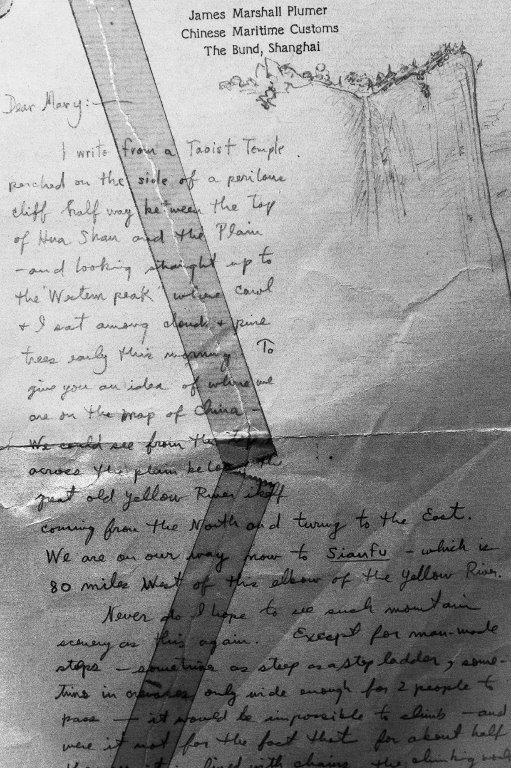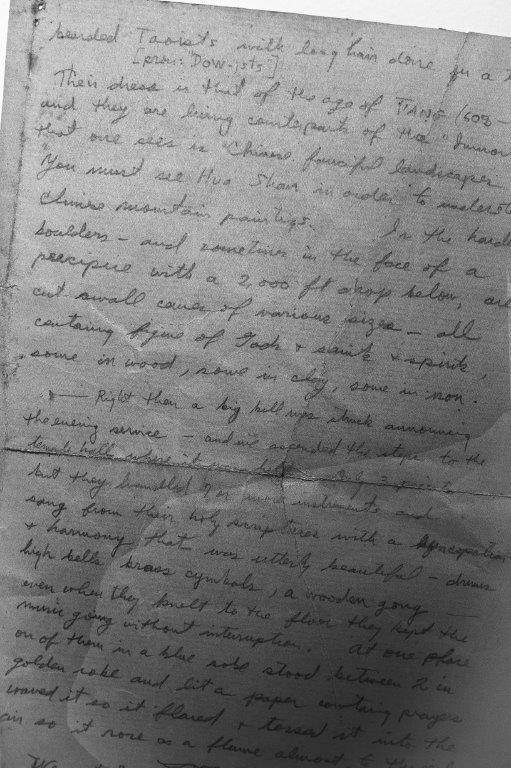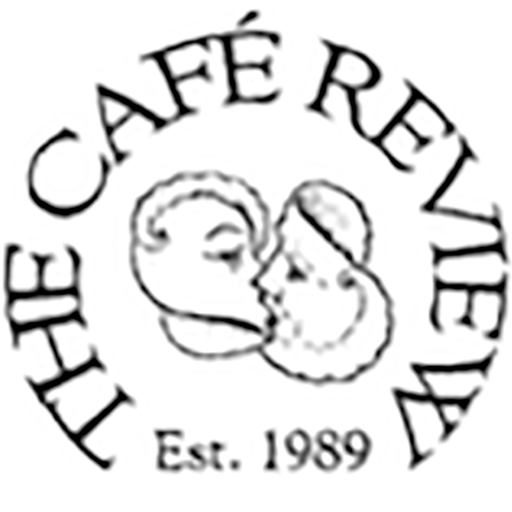Letter From China
by Eero Ruuttila
Dear Mary: —
I write from a Taoist Temple perched on the side of a perilous cliff half
way between the top of Hua Shan and the Plain — and looking straight up to
the “Western Peak” where Carol & I sat among clouds & pine trees early
this morning. To give you an idea of where we are on the map of China —
We could see from the top across the plain below the great old Yellow River
itself coming from the North and turning to the East. We are on our way now
to Sianfu — which is 80 miles West of this elbow of the Yellow River.
Never do I hope to see such mountain scenery as this again. Except for
man-made steps — sometime as steep as a step ladder, sometime in crevasses
only wide enough for 2 people to pass — it would be impossible to climb —
and were it not for the fact that for about half the way it is lined with chains,
the climbing would be scary if not dangerous. The highest crags have become
perches for temples run by bearded Taoists with long hair done in a top-knot.
[pron: “Dow-ists”]
Their dress is that of the age of T’ang (608–970) and they are
living counterparts of the “Immortals” that one sees in Chinese
fanciful landscapes. You must see Hua Shan in order to
understand Chinese mountain paintings. In the hardest boulders
— and sometimes in the face of a precipice with a 2,000 ft drop
below, are cut small caves of various sizes — all containing figures
of Gods & saints & spirits, some in wood, some in clay, some in iron.
Right then a big bell was struck announcing the evening service — and
we ascended the steps to the temple hall where it was held. Only 3 priests
but they handled 7 or more instruments with a syncopation & harmony that
was utterly beautiful — drums high bells brass cymbals, a wooden gong — even
when they knelt to the floor they kept the music going without interruption.
At one place one of them in a blue robe stood between 2 in golden robe and
lit a paper containing prayers waved it so it flared & tossed it into the air
so it rose as a flame almost to the ceiling.
I love you & I will try to write more later,
Jim
[Found letter (while house–sitting), written to my Grandmother Mary
(Plumer Washburn) from her brother, Jim, while he was stationed in
Shanghai, China, cataloging Asian art for the Chinese government at the
Bund Maritime Station. It was one of many colorful letters he wrote to
her in the late 1920’s when she was unhappy in her role as “a farmer’s
wife” to my grandfather, George Fletcher Wason of Hingham, MA.
George & Mary divorced when my Mother & her twin brother
were 6 years old.
James Marshall Plumer went on to become General Douglas MacArthur’s
Pacific Theater Cultural Attaché at the end of World War II, in Tokyo,
responsible for conducting inspections as well as advocating for the
preservation of museums and cultural monuments in Japan & China.
Following his return to the States in 1949 he resumed his pre–war position
as Lecturer of Far Eastern Art at the University of Michigan. An avid
researcher and writer, he continued his writing, studies, and lectures about
Asian Art, not only in relation to China but also India, Korea, Japan, and
Southeast Asia. He died June 15, 1960, less than 2 weeks after his
promotion to full Professor at the University of Michigan.]



